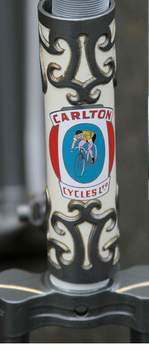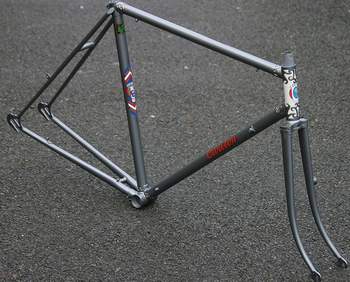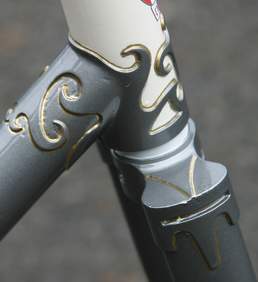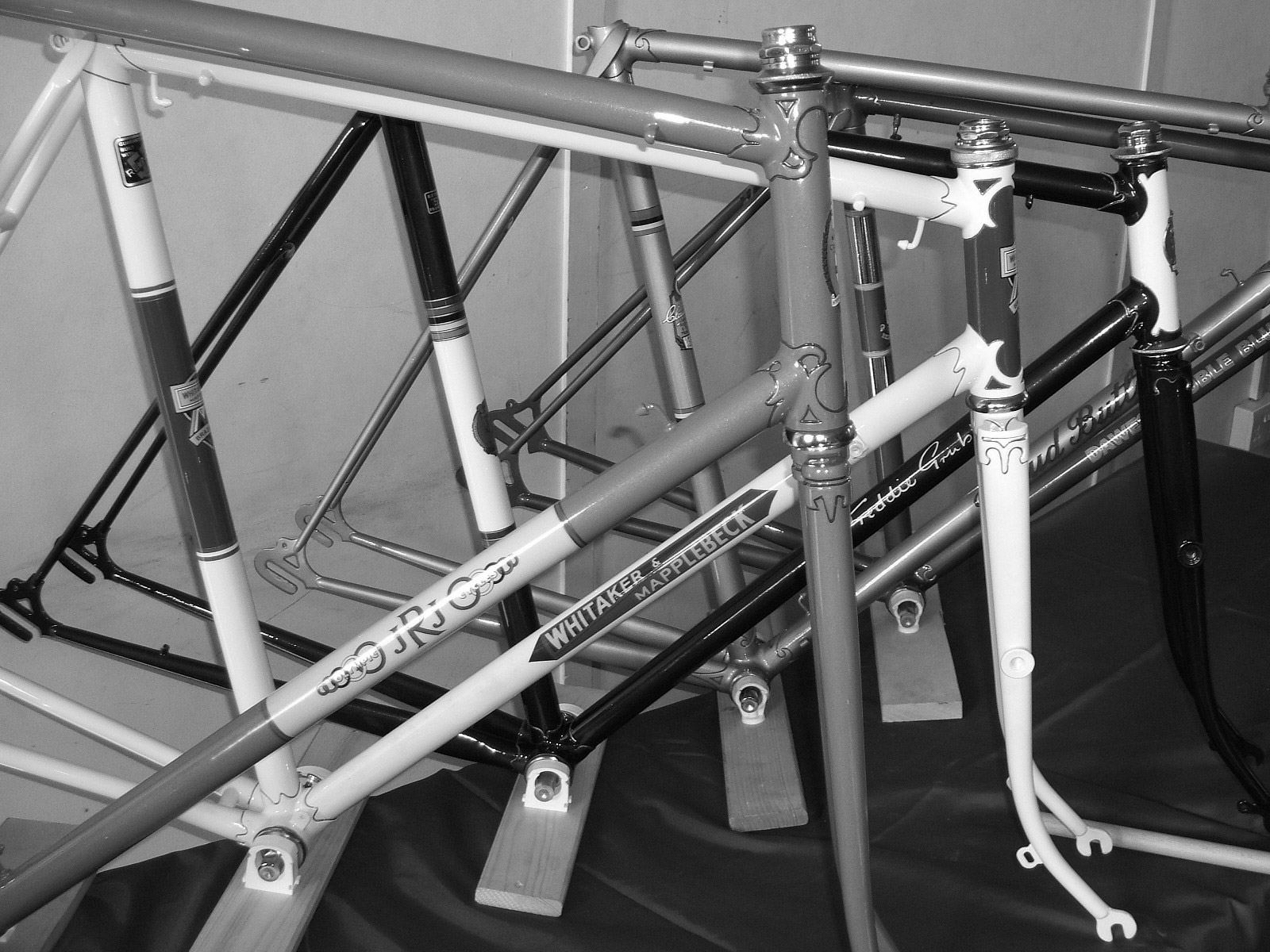Carlton International
Posted: Tuesday 21st July 2020
Frames built with fancy shaped lugs are almost entirely a British obsession – until at least fairly recently when several US framebuilders have taken this to new heights of complexity and beauty. Cutting the lugs into intricate shapes started in the middle to late 30s. Other frame builders took up the idea, one of whom was Carlton. Carlton was an old firm which had been founded back in 1898 which turned out modest quantities of ordinary roadsters. In the early 1930s it found itself in financial difficulties and a local wealthy businessman, Hon Charles Fitzroy rescued it. From then on the character of Carlton Cycles changed quickly. They began to build more good and top quality lightweights and the ordinary, pedestrian bikes began to take second place. The top machine was named the Flyer and it featured Chater-Lea lugs with more complex shapes gthan commonly used at the time though not very refined in line. Carlton Cycles sponsored the Monckton CC team amongst whom was Shake Earnshaw, Best British All Rounder winner one year and became very well known especially in the North and Midlands.

During the war D R O’Donovan took over Carltons and production of roadsters ceased. His sons, Kevin and Gerald joined him later – Gerald to become head honcho at Raleigh’s specialist frame unit. They continued with building frames with quality components at a price a little bit below that of the smaller builders. Carlton were a bit bigger than most specialist builders with an output of 50 lightweight frames a week in 1939. Careful speccing and sourcing of componentry allowed them to put together a bike that would have plenty of credibility with the keen clubman but which was quite a bit cheaper than a Hetchins or Bates. And this was perfectly demonstrated in the International model (images top right and below) introduced in 1953. The frame was quite modestly priced at £18 10s. This became the International Clubman in late 1955 for the 1956 season with the frame price slashed to £12 15s 6d including chrome plating.
The lugs were as intricate as the Hetchins Magnum Opus and most were built from Reynolds 531 double butted tubing – however some were actually built with 531 plain gauge tubing. Of course there were not the extra touches that a Hetchins would display such as the stiffeners on the seatstay bridge but they were an exceptionally nice looking frame. A complete International Clubman with chrome plating and 10-speed Simplex or Benelux gears cost £30 in 1957 which was about the price of a Hetchins Magnum Opus frame. The head lugs were really intricate with long windows in the front and small windows each side. Quite how the lugs were cut so well at what essentially was a cut price is not known. Later Capella lugs which were a little bit fancy were made from pressings in Italy I believe. Chrome plated head lugs and fork crown were a standard option and even flam paint was included in the price.
The International model was available for quite a few years. Carlton were bought in 1960 by Raleigh who decided that they needed some specialist lightweight input and a brand already known and well received by serious cyclists. The International model disappeared by the time of the 1961 catalogue but reappeared in 1965 available just as a frame – perhaps they found a stack of the frame lugs!


Equipment
This was essentially very functional without being top-of-the range. GB Coureur or Weinmann brakes, Williams C45 chainset with fluted cranks, Dunlop High pressure rims (26in on the smaller frames), Bayliss Wiley small flange hubs and a Lycett or Wrights saddle. Gears were optional with Cyclo Benelux or Simplex being standard with four, five or 10 speeds. With single speed a complete machine only cost £26 18s 6d!
Frame Fittings
Frames came with all the standard fittings at the time – pump pegs, mudguard eyes, gear and brake cable stops and a front lamp bracket boss.
Frame Geometry
One real strength of Carlton’s frames was well thought out frame geometry and sizing. They were offered in sizes 19 to 24 1/2in with proportionate length top tubes, sensible height bottom brackets even on the smallest frame and 72° parallel head and seat tube angles except on the largest frame which was 73°/71°.
Posted: Tuesday 21st July 2020
Contents
This article appears in the following categories.
Upcoming Events
Whether you are looking for a gentle social meet up, or a 100-mile ride browse the community’s upcoming events and plan your next weekend outing.
